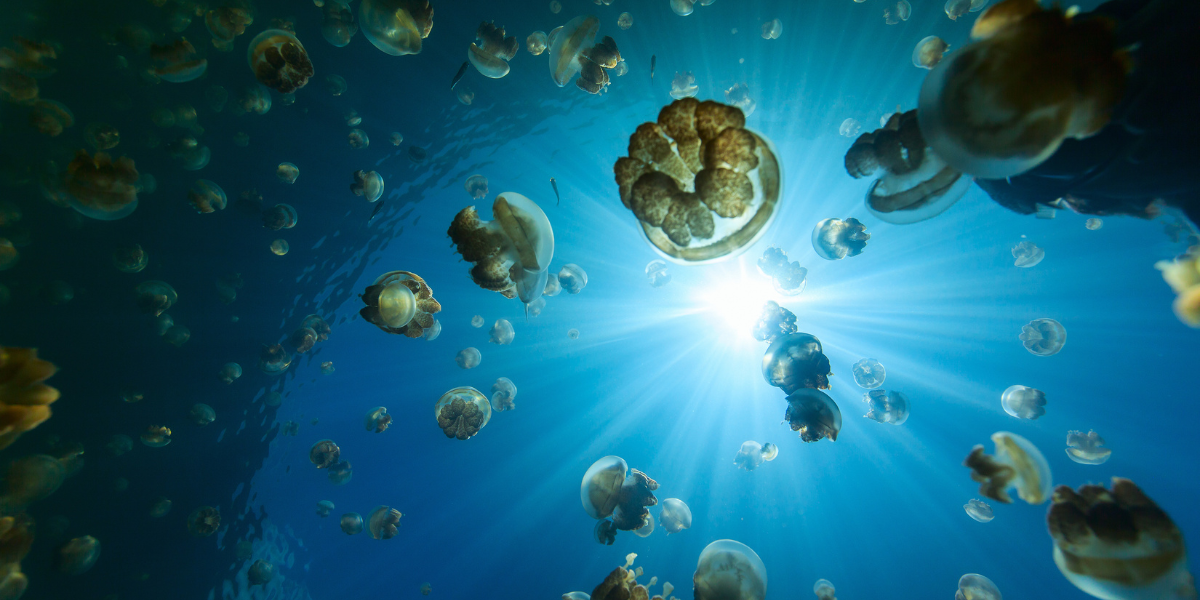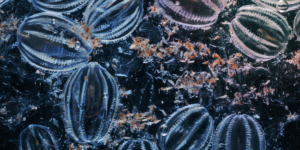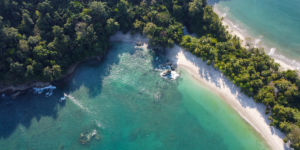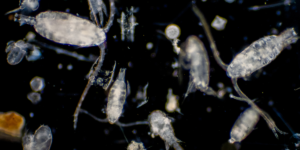The Impact of Invasive Species on Marine Ecosystems: Effects on Native Species and Habitats
You may not realize it, but invasive species are wreaking havoc on marine environments all over the world. These non-native plants and animals can have serious consequences for native species and their habitats.
Invasive species often outcompete native organisms for resources like food, space, and sunlight, which can lead to declines in populations of local species.
The impacts of invasive species go beyond just competition with native life forms. They can also alter entire ecosystems by changing the physical characteristics of marine habitats. For example, some invasive algae can create thick mats that cover the ocean floor and smother other plants and animals living there.
Additionally, some invasive predators can cause cascading effects throughout an ecosystem by consuming large amounts of prey or introducing new diseases to vulnerable populations.
It’s clear that understanding how invasive species affect native species and habitats is essential for protecting our oceans’ health and biodiversity.
Key Takeaways
- Invasive species can outcompete native organisms for resources, leading to declines in populations of local species and altered ecosystem functioning.
- Invasive species can physically modify habitats by altering substrate composition or reducing water quality through increased nutrient inputs or sedimentation.
- Invasive predators can cause cascading effects throughout an ecosystem by consuming large amounts of prey or introducing new diseases to vulnerable populations.
- Early detection and rapid response is crucial in preventing the spread of invasive species in marine environments, and control and eradication methods can be effective in eradicating invasive species. Prevention and education through awareness campaigns, community involvement, and beach cleanups are also key components in protecting oceans from the negative impacts of invasive species.

Understanding Invasive Species in Marine Environments
Let’s dive in and explore how invasive species mess with the delicate balance of marine environments. Marine introductions can occur through a variety of mechanisms, such as ballast water discharge, aquaculture escapees, and intentional releases.
Once introduced to a new environment, invasive species have the potential to outcompete native species for resources such as food and habitat. This can result in reduced biodiversity and altered ecosystem functioning.
The ecological consequences of invasive species are numerous. Invasive predators may consume prey that is not adapted to their hunting strategies or may cause local extinctions of native species. Invasive plants may alter sediment composition or nutrient cycling processes by changing primary productivity levels.
In addition, some invasive species can carry diseases that infect native populations leading to further declines in population sizes. The impacts of these invaders on marine ecosystems can be long-lasting and difficult to reverse, making it crucial to prevent introductions before they occur.
Impact on Native Species
You’ll be amazed at how much damage can be caused to the delicate balance of an ecosystem when non-native organisms are introduced.
In marine environments, invasive species can have severe impacts on native species and their habitats. One of the primary ways they do this is by competing with native organisms for resources such as food, space, and shelter. This competition can result in reduced populations or even extinction of native species.
Another way invasive species affect marine ecosystems is through predation pressure. Non-native predators may prey on native organisms that haven’t evolved defenses against them, leading to a decline in their populations. This can also lead to a cascade effect throughout the food chain as other predators may struggle without their usual prey or become overabundant if their prey’s numbers are reduced.
Overall, it’s clear that invasive species pose a significant threat to the health and stability of marine ecosystems. Efforts must be made to prevent their introduction and manage their impact once established.
Altering Marine Habitats
If you’re not careful with what you introduce to the ocean, it can quickly alter the natural homes of many creatures that call it home.
Invasive species often outcompete native species for resources and disrupt the delicate balance of marine ecosystems. This can lead to habitat destruction and ecosystem modification.
Invasive species can physically modify habitats by altering substrate composition or reducing water quality through increased nutrient inputs or sedimentation. For example, the invasive green alga Caulerpa taxifolia has been known to overgrow and smother native seagrass beds, which are important habitats for many fish and invertebrates.
Additionally, invasive species can change community dynamics by preying on or outcompeting native species, leading to cascading effects throughout the food web.
The impact of these changes on marine ecosystems is complex and often difficult to predict, but studies have shown that they can have significant long-term consequences for biodiversity and ecosystem function.
Management and Prevention Strategies
To effectively manage and prevent the spread of invasive species in marine environments, you need to focus on early detection and rapid response strategies. This involves implementing monitoring programs that identify and track these species, as well as developing plans to quickly contain and remove them from affected areas.
Control and eradication methods are also crucial in preventing further damage, such as using pesticides or other targeted approaches. Lastly, education is key in preventing new introductions by raising public awareness about the risks associated with invasive species and promoting responsible behavior among water users.
Early detection and rapid response
Early detection and rapid response is crucial in preventing the spread of invasive species in marine environments. Early warning systems and surveillance networks, as well as predictive modeling, can help identify potential threats before they become established.
In Maine, for example, quick action was taken to prevent further damage to native shellfish populations when the green crab was first detected. This involved setting up a monitoring program to track the population size and distribution of the crab, as well as using baited traps to remove them from the area.
Rapid response efforts can also involve physical removal of invasive species or deployment of barriers to prevent their spread. In some cases, chemical treatments may be used to control populations. However, it’s important that management strategies are carefully chosen based on their effectiveness and potential impact on non-target species and habitats.
Early detection and rapid response efforts can not only protect native species but also save money by reducing costly restoration efforts later on. By working together with scientists and stakeholders, we can develop more effective ways to detect and respond to invasive species threats in marine environments.
Control and eradication methods
It’s critical that we act swiftly and decisively to eliminate invasive species from our oceans, using effective and targeted control methods.
One of the most common approaches is the use of chemical treatments, which can be highly effective in eradicating invasive species. However, these treatments must be carefully chosen to minimize harm to native species and habitats.
Another promising approach is biological control, which involves introducing natural predators or parasites that target specific invasive species. This method can be more sustainable as it relies on natural processes rather than chemical interventions. However, careful consideration must also be given to potential unintended consequences and impacts on other non-target species.
Overall, a combination of different control methods may provide the best chance for successfully controlling and eradicating invasive species in our marine environments.
Prevention and education
By educating ourselves on the dangers of invasive species and taking preventative measures, we can ensure the long-term health and vitality of our oceans.
Awareness campaigns play a crucial role in informing the public about the impact of invasive species on native ecosystems. These campaigns often utilize social media, educational programs, and community events to educate individuals about the risks associated with introducing non-native species into marine environments.
Community involvement is also essential for preventing invasive species from spreading. By working together to monitor and report sightings of potential invaders, individuals can help prevent their introduction into new habitats. Additionally, community-led initiatives such as beach cleanups can reduce the likelihood that invasive species will be introduced through human activity.
Ultimately, prevention and education are key components in protecting our oceans from the negative impacts of invasive species.
Current and Future Implications
As you dive deeper into the subtopic of Current and Future Implications, consider the economic and ecological impacts caused by invasive species in marine environments.
Global efforts and collaborations are underway to address these issues, but it’s critical that continued research and management be prioritized to ensure long-term success.
By staying informed on the latest developments and actively participating in prevention strategies, you can help protect our oceans from the devastating effects of invasive species.
Economic and ecological impacts
What are the economic and ecological impacts of invasive species on native species and habitats in marine environments, and how do these impacts affect local communities?
A cost benefit analysis reveals that invasive species can have severe financial implications for industries such as fisheries and tourism. Invasive species can compete with native organisms for resources, leading to a decrease in biodiversity and ultimately impacting the sustainability measures of marine ecosystems. This can lead to a decline in fish populations, which affects not only fishermen but also those who rely on seafood for their livelihoods.
In addition to economic impacts, invasive species also have ecological consequences. They can alter food webs by consuming or outcompeting native organisms, resulting in a ripple effect throughout the ecosystem. This disturbance can lead to changes in water quality, sedimentation rates, and even shoreline erosion.
These ecological impacts are not limited to marine environments but also extend to coastal communities that depend on healthy ecosystems for protection against natural disasters such as storms and hurricanes. Therefore, it’s crucial that we continue researching ways to control or prevent the spread of invasive species in order to protect both the economy and environment of our coastal areas.
Global efforts and collaborations
Now that we’ve explored the economic and ecological impacts of invasive species on marine environments, it’s important to examine the global efforts and collaborations being made to address this issue.
International cooperation is crucial in implementing effective conservation initiatives that can mitigate the negative effects of invasive species on native species and their habitats.
One example of such collaboration is the Global Invasive Species Information Network (GISIN), which aims to provide a platform for sharing information about invasive species around the world. Through GISIN, experts from different countries can collaborate in monitoring, reporting, and managing invasive species.
Additionally, there are several international agreements such as the Convention on Biological Diversity (CBD) that promote cooperation among nations in protecting biodiversity and addressing issues related to invasive species.
These efforts serve as a testament to how working together across borders can lead to more efficient and effective solutions towards preserving marine ecosystems.
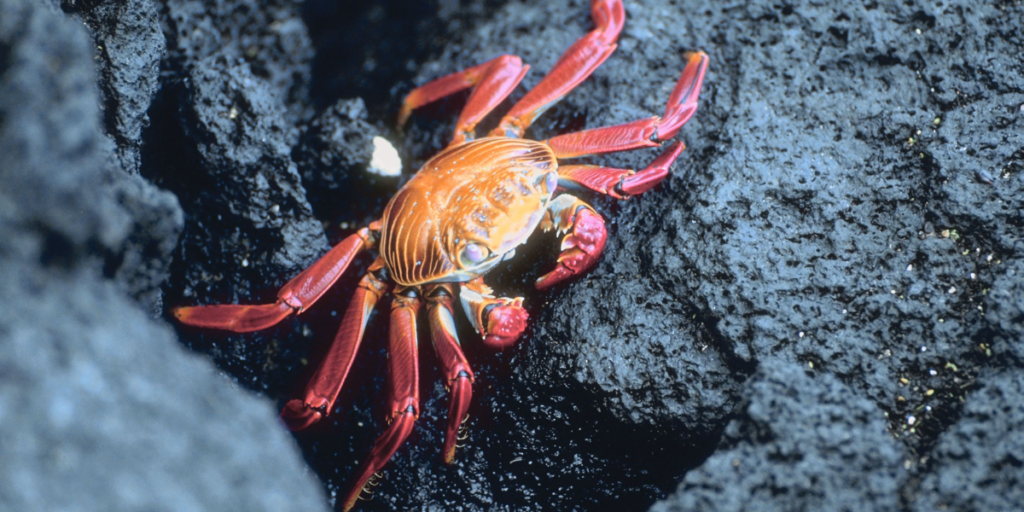
Importance of continued research and management
To fully understand the impact of non-native organisms on ocean ecosystems, you need to keep conducting research and implementing management strategies. Invasive species pose sustainability challenges that require continuous monitoring and assessment. The effects of these species can be devastating, causing significant changes in native habitats and populations.
By investing in scientific research, we can gain valuable insights into how invasive species interact with their environment and identify effective management strategies. In addition to identifying the ecological impacts of invasive species, continued research is also crucial for informing policy decisions.
Policies related to trade, transportation, and environmental protection are all relevant when it comes to preventing the introduction of invasive species. Research findings can help policymakers make informed decisions about how to manage both existing invasions and prevent new ones from occurring.
Overall, ongoing research and management efforts are essential for mitigating the detrimental effects of invasive species on marine environments and ensuring long-term sustainability.
Frequently Asked Questions
How does climate change affect the spread of invasive species in marine environments?
“Prevention is better than cure.”Climate change adaptation in marine environments can help prevent the spread of invasive species. Prevention strategies include early detection, monitoring, and rapid response to new invasions. Evidence-based approaches are key for effective prevention.
What are the economic impacts of invasive species on marine industries such as fishing and tourism?
You want to know the economic impacts of invasive species on marine industries like fishing and tourism. Economic losses can be significant, but prevention strategies such as early detection and rapid response can mitigate these effects.
Can native species adapt to invasive species and coexist with them in the long term?
You may wonder if native species can coexist with invasive ones in the long term. Research suggests that they can, through adaptive strategies and ecological interactions. Evidence-based methods show that belonging to an ecosystem is crucial for survival.
How do invasive species affect the overall marine ecosystem beyond just native species and habitats?
To ensure biodiversity conservation and ecological resilience in marine ecosystems, it’s crucial to understand how invasive species affect the entire ecosystem. Evidence shows that they can alter nutrient cycling, disrupt food webs, and reduce overall diversity.
What are the ethical considerations of managing invasive species, such as the use of chemical pesticides or the removal of certain species?
Oh, the joys of managing invasive species! What a delightful ethical dilemma it is to consider whether or not to use chemical pesticides. But fear not, dear reader, for scientific evidence suggests alternative methods may be just as effective.
Conclusion
Now that you’ve learned about the impact of invasive species on native species and habitats in marine environments, it’s clear that these non-native organisms can have devastating effects.
The evidence shows that invasive species can outcompete native species for resources, alter habitats, and even lead to extinctions. These changes can have far-reaching consequences for entire ecosystems.
But there’s hope. By implementing effective management and prevention strategies, we can minimize the negative impacts of invasive species on marine environments. This requires a concerted effort from stakeholders at all levels – from individual citizens to governments and international organizations.
It’s important to remember that the consequences of invasive species are not just limited to marine environments. Invasive species are a global problem that affects all ecosystems on Earth.
By recognizing the importance of preventing the introduction and spread of invasive species, we can work towards protecting our planet’s biodiversity for generations to come.

